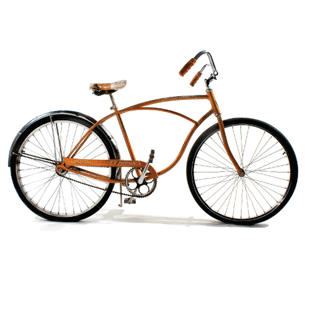
Inducted Year: 2000
Part kids’ toy, part adult athletic equipment, and part basic transportation, bicycles first gained popularity at the end of the 19th century. In the 1890s, as the “safety” bicycle replaced the perilous, giant-wheeled “ordinary,” men and women reveled in a new freedom to roam. Automobiles soon offered stiff competition, but after World War I, manufacturers bounced back with kids’ bikes. Schwinn’s balloon-tired Excelsior “cruiser” of 1933 dominated the bike industry for thirty years. After World War II, on bike designs inspired by motorcycles and rocket ships, kids ranged widely in the new suburbs. Schwinn’s Sting Ray, with its banana seat and elongated strut, buoyed the industry in the 1960s and 1970s. In the latter period, fitness-conscious adults found in biking an aerobic exercise that is easier on the knees but harder on the seat. Bikes for smaller kids remain “gendered”—cute for girls, aggressive for boys. But starting in the 1980s, manufacturers adapted space-age materials to create lighter, faster, and more comfortable racing bikes of similar design for men and women. Retro “comfort bikes” eased the baby boomers’ ride into middle age. Recently, companies offered extreme machines for trick riders, off-road enthusiasts, and daring downhill racers.

Factoyd: The earliest bicycles had no spokes to distribute shock sideways and were so uncomfortable they came to be known as Boneshakers




